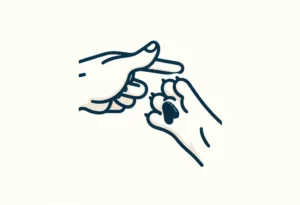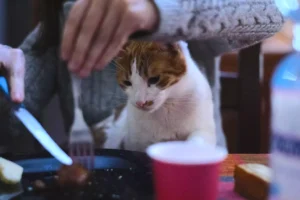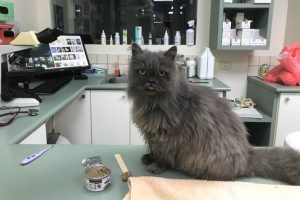Have you noticed your cat’s whiskers have been mysteriously cut? Wondering why this might be happening? Read on to uncover the reasons behind your cat’s trimmed whiskers.
It’s important to understand why your cat’s whiskers are cut to ensure their well-being and happiness. Let’s explore this topic further with the following sections:
The Function of Whiskers
Whiskers are not just adorable features on your cat’s face; they serve a crucial function in their daily lives. Vibrissae, as they are formally known, are sensitive touch receptors that help cats navigate their surroundings with precision. These whiskers are so sensitive that they can detect even the slightest changes in air currents, alerting your furry friend to potential dangers or prey nearby.
Cutting a cat’s whiskers can be compared to taking away their GPS system – it drastically impairs their ability to sense and assess their environment accurately. Your cat relies on their whiskers to judge whether they can fit through tight spaces, detect obstacles in the dark, and even gauge the mood of other animals they encounter. So, if you’re wondering why your cat’s whiskers are cut, remember how essential they are for your feline companion’s well-being.
Potential Reasons for Cut Whiskers
There are a few potential reasons why your cat’s whiskers may have been cut, none of which are recommended. Accidental trimming by curious children or inexperienced groomers is a common cause. Health issues such as compulsive grooming or being caught in machinery can also result in damaged or cut whiskers.
Moreover, in some cultures, there is a misguided belief that trimming whiskers can improve a cat’s appearance. However, this is a harmful practice that can lead to disorientation and stress in your pet. Remember, a cat’s whiskers should never be cut under any circumstances.
Insightful Tip: If you notice your cat’s whiskers have been cut, monitor them closely for signs of distress or disorientation. It’s crucial to create a safe and whisker-friendly environment for your furry friend to thrive.
How to Help Your Cat
If you’ve noticed your cat’s whiskers have been cut, it’s essential to create a safe environment for them. Ensure they have easy access to their food, water, and litter box without needing to navigate tight spaces. Additionally, avoid sudden movements around your cat to prevent potential accidents due to their compromised spatial awareness.
If you suspect your cat’s whiskers have been cut intentionally, it’s crucial to seek veterinary advice promptly. A vet can assess the situation, provide necessary care, and offer guidance on how to manage your cat’s well-being during their whisker regrowth period.
Remember, your cat’s whiskers are sensitive and serve a vital purpose in helping them navigate their surroundings. By taking proactive steps to ensure your cat’s comfort and safety, you can support them through this challenging time.
The Dangers of Whisker Trimming
Cutting a cat’s whiskers can lead to various dangers and should be avoided at all costs. Firstly, whiskers are essential for a cat’s navigation and spatial awareness. Trimming them can disorient your cat and make them more prone to accidents.
In addition, whiskers play a crucial role in helping cats communicate and understand their environment. They provide important sensory information that your cat relies on for interacting with the world around them. Therefore, cutting their whiskers can cause unnecessary stress and confusion.
Overall, trimming a cat’s whiskers is not only unnecessary but can also have detrimental effects on their well-being. It’s important to respect your cat’s natural instincts and refrain from any actions that compromise their comfort and safety.
Remember, a happy and healthy cat is a whisker-full cat!
Signs of Discomfort
If you notice that your cat’s whiskers have been cut, they may exhibit signs of discomfort such as increased sensitivity around their face or even potential confusion in navigating their surroundings. Your cat might bump into objects more frequently or seem hesitant to explore new areas. To address this discomfort, ensure your cat has a safe and familiar environment with clear pathways and minimal obstacles. Avoid touching or tugging on the whiskers to prevent further irritation.
Whisker Regrowth Process
After your cat’s whiskers have been cut, don’t worry – they will grow back! The regrowth process typically takes around 2-3 months for the whiskers to fully grow back to their original length. During this time, your cat may seem a bit off-balance or cautious as they adjust to their new whisker length. Be patient and provide a supportive environment for your cat as they adapt to their changing sensory input.
Whisker Care Tip: While waiting for your cat’s whiskers to regrow, maintain a stress-free environment to help them feel secure and comfortable during this transition period.
Interesting Whisker Facts
Did you know that a cat’s whiskers are not just for show? These specialized hairs are vital tools for your feline friend’s navigation and communication. Imagine a cat without whiskers—it would be like driving a car without a steering wheel! Here are some fascinating whisker facts to enrich your understanding: – Whiskers are as Wide as Your Cat: Yes, you heard it right! A cat’s whiskers are roughly the same width as its body. This incredible adaptation helps cats maneuver through tight spaces without getting stuck. – Sensitive Sensors: Whiskers are so sensitive that they can pick up slight changes in the environment, such as air currents and movement. This sensory superpower helps cats detect obstacles in the dark and gauge spatial awareness. – Mood Indicators: A cat’s whiskers can also reflect its mood. When relaxed, the whiskers point forward; when scared or aggressive, they may flatten against the face. By observing your cat’s whiskers, you can gain insight into its emotional state.
Cat Whisker Trivia
Curious about some fun and quirky facts about your feline friend’s whiskers? Let’s dive into some cat whisker trivia that will not only entertain you but also serve as a reminder of how remarkable these whiskers truly are: 1. Whiskers Never Stop Growing: Just like our nails, cat whiskers continuously grow throughout their lives. However, they shed and regrow periodically to ensure optimal functionality. 2. Their Scientific Name: Did you know that cat’s whiskers are called “vibrissae”? This term refers to the specialized nature of these sensory hairs that help cats navigate their surroundings with precision. 3. Cutting Whiskers—A Big No-No: Now, back to our initial topic—why are your cat’s whiskers cut? It’s crucial to understand that cutting a cat’s whiskers can significantly disrupt their natural abilities and cause stress and disorientation. Whiskers should never be trimmed or cut, as they play a crucial role in a cat’s daily life.
Remember, whiskers are not just accessories for your feline companion—they are essential tools for their well-being and survival. So, next time you marvel at your cat’s whiskers, appreciate them for the incredible natural wonders they are!
Why Are My Cat’s Whiskers Cut?
Curious about why your cat’s whiskers seem shorter? It might not be intentional. Cats’ whiskers are crucial for their sensory perception, helping them navigate their surroundings with precision. However, sometimes whiskers may get damaged or accidentally trimmed while grooming.
If you notice your cat’s whiskers are cut, it’s essential to check for any signs of discomfort or behavior changes. In most cases, whiskers will grow back on their own, so there’s usually no cause for alarm. However, if you suspect something more serious, such as intentional cutting, it’s best to consult with a veterinarian to rule out any underlying issues.
Conclusion: Embracing Whiskers
Your cat’s whiskers are like their personal GPS system, guiding them through the world with grace and confidence. Celebrate and embrace your cat’s whiskers as an integral part of their sensory system and overall well-being. Whether long or short, whiskers are a unique and essential feature that make your feline friend truly special. So next time you see those whiskers twitching in curiosity, give them a little extra appreciation for all they do. After all, whiskers are not just whiskers – they’re a cat’s built-in superpower!
Alex, a passionate animal lover, has experience in training and understanding animal behavior. As a proud pet parent to two dogs and three cats, he founded AnimalReport.net to share insights from animal experts and expand his knowledge of the animal kingdom.









